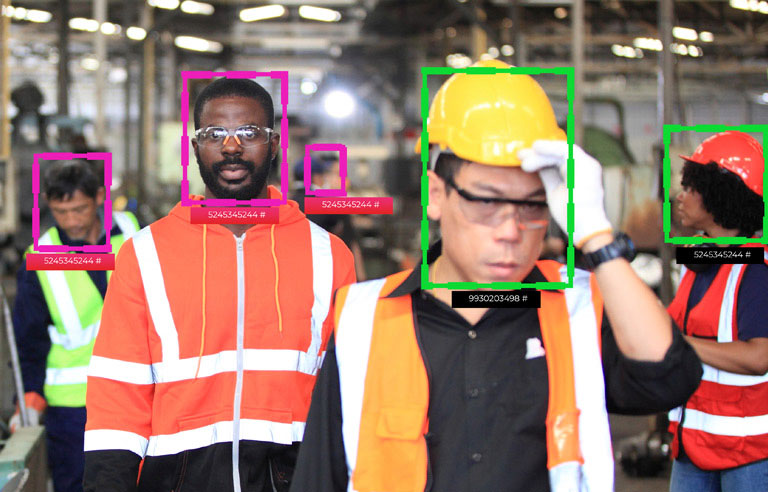3 Ways Video AI is Reducing Injuries and Improving Workplace Safety
Next-gen analytics deployed on existing surveillance cameras provides an extra set of ‘trained eyes’ for safety managers


Harnessing the power of artificial intelligence technologies to improve business efficiencies and bolster the bottom line seems to be the topic du jour across the business landscape today, regardless of industry. From addressing challenges related to operations, logistics management, security and everything in between, the power, promise and potential pitfalls of AI have been examined ad nauseam in the media.
However, many people aren’t aware that, right now in their business, they can begin using AI to immediately change their operations by leveraging existing surveillance camera systems. When you begin to view your camera network as an extra set of trained eyes instead of just as security-focused technology, the possibilities to transform your workplace become endless.
Fortunately, a bevy of both preconfigured and customizable analytic solutions are available to provide you with the information needed to identify safety violations and other problematic behaviors before they result in possible injuries or fatalities. Here are three ways video AI is reducing injuries and creating safer workplaces:
1. PPE compliance
Depending on your operating environment, you may have different guidelines in place concerning the personal protective equipment that workers are required to wear. Whether it’s ensuring that those at manufacturing facilities and construction sites are donning hard hats and safety vests or employees in a health care setting are using facemasks where necessary, AI solutions are available to help you streamline enforcement of these policies and/or regulations.
Rather than having to depend on managers or other workers to oversee these efforts, the suite of labor safety analytics from ISS, for example, can automatically alert designated personnel about workers who are missing these pieces of PPE so that corrective action can be taken. Additionally, these analytic tools can be integrated with other systems, such as access control, to restrict the movement of a worker throughout a facility or site until the proper PPE is donned.
When it comes to regulatory compliance, the data generated by these analytics can be aggregated into a dashboard to show a variety of information related to PPE violations, such as how many were detected and where they occurred. Using facial recognition in conjunction with such a tool could also identify those who run afoul of PPE rules and how many violations they have had.
2. Identifying unsafe behaviors
Every day, safety managers walk into their facilities and see the challenges facing their workplace safety programs. Video-based AI can act as a force multiplier for these managers, detecting and providing alerts about not only predefined safety violations, but also risky worker behaviors.
This could include everything from someone failing to hold a handrail in a stairwell to alerting security when a worker has entered a restricted area. In industries such as food preparation where strict hand-sanitizing protocols must be followed, video AI can also be used to measure adherence with such policies.
3. Targeted training
Aside from monitoring the environment, video analytics can also help businesses take a more focused approach with their safety training efforts. Rather than forcing everyone at a particular site to take part in weekly or monthly training sessions, leveraging video analytics for compliance monitoring in conjunction with facial recognition technology, for example, would enable you to identify known violators so that training could be focused and tailored to them rather than the workforce writ large. Currently, numerous organizations must host frequent safety trainings for all employees when violations may only be committed by a handful of people, thereby hampering overall productivity rates.
A pioneer in analytics creation and design with more than 25 years of experience developing cutting-edge surveillance technology, ISS is the leader in applying AI to human behavior through video. With hundreds of thousands of hours of AI training our analytics systems around human behavior, our analytics can use existing surveillance infrastructure to identify unsafe behaviors in real time. Additionally, reports can be created on employees for training, along with safety statistics that can be used by stakeholders to identify hazards before they can result in an injury or death.
Interested in learning more about our suite of labor safety analytics? Find out more here or request a demo today!
About ISS – Intelligent Security Systems
Headquartered in Woodbridge, NJ, with offices worldwide, Intelligent Security Systems is a leading provider of video intelligence and data awareness software. The company, which was founded more than two decades ago and holds more than 30 different patents and trademarks, is a pioneer in the development of next-generation video analytics. With a research and development team consisting of more than 180 developers and engineers, ISS provides a comprehensive line of leading-edge video analytics solutions, such as the renowned SecurOS platform, for a wide range of use cases and vertical market applications. Visit issivs.com/ for more information.
Post a comment to this article
Safety+Health welcomes comments that promote respectful dialogue. Please stay on topic. Comments that contain personal attacks, profanity or abusive language – or those aggressively promoting products or services – will be removed. We reserve the right to determine which comments violate our comment policy. (Anonymous comments are welcome; merely skip the “name” field in the comment box. An email address is required but will not be included with your comment.)

